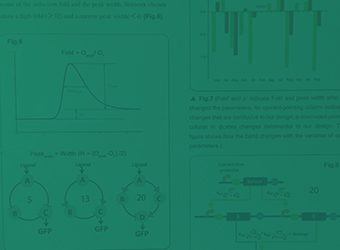Team:Peking
From 2013.igem.org
XingjiePan (Talk | contribs) |
Spring zhq (Talk | contribs) |
||
| Line 292: | Line 292: | ||
<h1 class="AppendixHeadLine">Sensor Mining</h1> | <h1 class="AppendixHeadLine">Sensor Mining</h1> | ||
<img id="Appendix1Icon" class="AppendixIcon" src="https://static.igem.org/mediawiki/igem.org/1/13/Peking2013_home_appendix1icon.png" /> | <img id="Appendix1Icon" class="AppendixIcon" src="https://static.igem.org/mediawiki/igem.org/1/13/Peking2013_home_appendix1icon.png" /> | ||
| - | <p> | + | <p>The core component of our biosensor toolkit is the transcriptional regulators that sense aromatic compounds. For the comprehensiveness of aromatics-sensing, a data-mining process was conducted to mine transcriptional regulators for each class of typical aromatic compounds from the database Uniprot. </p> |
<a href="">LEARN MORE</a> | <a href="">LEARN MORE</a> | ||
</div> | </div> | ||
Revision as of 11:36, 24 September 2013


Aromatics Scouts
A Comprehensive Biosensor Toolkit to Profile Aromatics in the Environment

Monitoring aromatic compounds in the environment remains a substantial challenge today. Noting the power of biosensors for quick and convenient testing, Peking iGEM has developed a functionally comprehensive biosensor toolkit to profile aromatics in the environment.
Transcriptional regulators that each senses a specific class of aromatics were first bioinformatically determined; they were then utilized to build a comprehensive set of biosensor circuits. Characterization on the detection profiles of individual biosensors and their orthogonality/crosstalk prove that these biosensors are really high-performance to profile aromatics in water.
Moreover, for the ease of practical applications, two types of genetic devices were also developed as plug-ins for biosensors: "Adaptors", a set of conceptually novel devices to convert undetectable chemicals into detectable aromatics, and "Band-pass Filter", a "concentration filter" that allows the detection of analyte concentration within a specific range.
We expect that these novel biosensors, together with the plug-in devices, will serve as intriguing synthetic biological tools for diverse practical applications.
Mining aromatics-sensing Biobricks
from the genomic database

Sensor Mining
The core component of our biosensor toolkit is the transcriptional regulators that sense aromatic compounds. For the comprehensiveness of aromatics-sensing, a data-mining process was conducted to mine transcriptional regulators for each class of typical aromatic compounds from the database Uniprot.
LEARN MOREHigh-performance, profile-
specific biosensors
Convert the undetectable into
the detectable
Rapidly tell the concentration
of the analyte
Resonate to bridge the gap
between minds

 "
"





